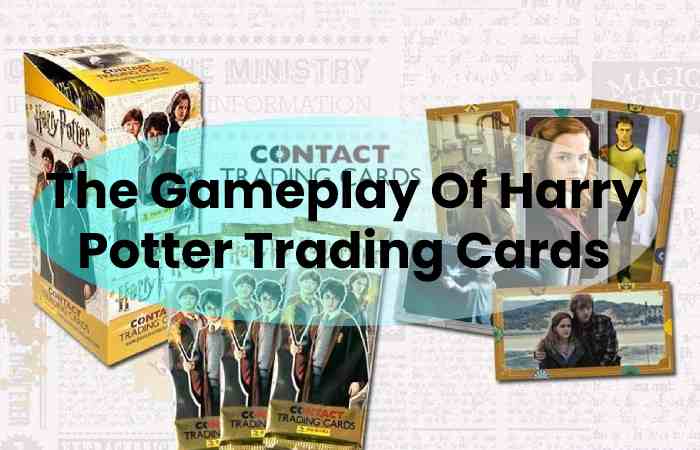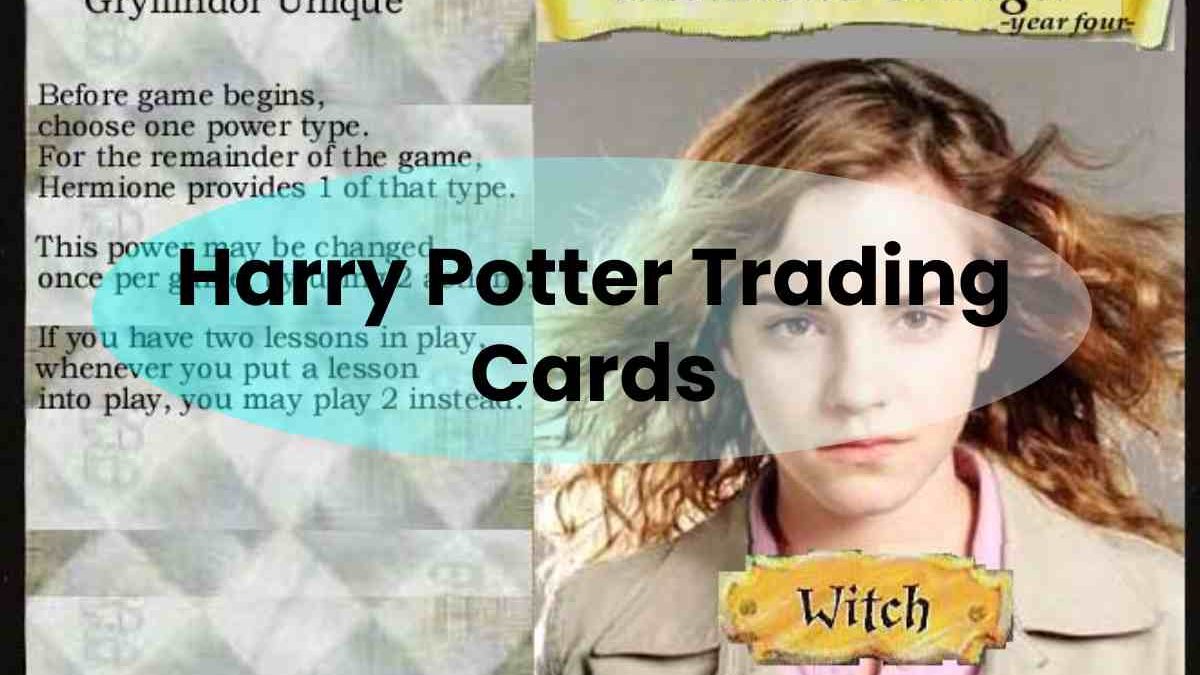Harry Potter Trading Cards
Harry Potter Trading Cards Game is an out-of-print collectable card game based in the world of J. K. Rowling’s Harry Potter novels. The game was formed by Wizards of the Coast in August 2001 and remained designed to contend with the Yu-Gi-Oh!, Pokémon and Magic: The Meeting card games.
Its release remained timed to coincide with the theatrical premiere of the first film in the series. Nevertheless, the game remained praised for immersing children in the Harry Potter universe. In one opinion, the game was the second best-selling toy in the United States; however, it is now out of print.
The Gameplay Of Harry Potter Trading Cards
The game is for two players, apiece with 60-card decks (with the addition of a preliminary Character; see below). The aim is to force the conflicting player to run out of cards from their deck first. When cards fix “damage” to a player, cards from the deck remain in the discard pile. The apiece player starts with a hand of seven cards and draws a card before each turn.
Types of cards
The Harry Potter Trading Card Game has eight different types of cards. Lessons are the rudimentary units of the game. Each delivers 1 “Power”, which is wanted to play other cards. The amount of Lessons in play determines the player’s competencies to play cards with different costs. There are five lesson cards, each with a distinct symbol and colour used to identify it on the other cards.
Spells are cards played directly into the discard pile and have a given effect. They have a printed Power price; there are Spells for each Lesson type. Creatures stay on the table when played. All Persons have a printed Power cost and need Care of Magical Creatures Lessons to play.
They have a Health number that controls how much damage they can take and a “Damage each turn” amount that dictates the amount of damage done to the opposite player each turn. Not all Persons do damage; some have special abilities.
Characters do not have a published Power cost or Lesson type and thus do not need Lessons to play, though they require two Actions. Instead, characters stay on the table and have special abilities that the player can use; some also provide Power.
Lesson Types
The game has five Lesson types, each applying to different cards. There is no limit on the Message cards in a player’s deck: a player may have as many kinds as they prefer.
Care of Magical Creatures (brown) is mainly used for Creature cards, although a small number of Spells, Items and Locations also require this Lesson. Care of Magical Creatures focuses primarily on dealing with damage.
Charms (blue) can remain used for Spells, Items and Locations. Charms specialise in low but versatile damage and other effects, such as locating cards from a player’s deck.
Potions (green) can remain used for Spells, Items and Locations. Potions cards are often compelling and require comparatively low Power costs, although they usually need a sacrifice of a certain number of Lessons.
Quidditch (yellow) can remain used for Spells, Items, Locations and Matches. This Lesson type was presented in the Quidditch Cup expansion and specialised in cards with two effects at once.
Transfiguration (red) can remain used for Spells, Items and Locations. These cards specialise in removing Creatures, Lessons and other cards from play while not straight damaging the opposition.
Keywords
Some cards have keywords in totalling their card type. These keywords permit other cards to refer to a specific kind of card. The “Wizard” or “Witch” title on Character cards is an example of a keyword, as is the “Healing” name on some other cards. Other common keywords include designations representing the four Hogwarts houses: Gryffindor, Hufflepuff, Ravenclaw, and Slytherin.
Some cards (including all Characters) take the keyword “Unique”, which indicates that solitary one of them can remain in play at a time (for either player). The only exclusion is if both players have the same starting Character.
History Of Harry Potter Trading Cards
Card Sets
The first set of cards, now usually called the base set, remained introduced in August 2001. Since the 116-card improper set was first released, four expansion sets have remained presented to vary play and expand card availability. The first three growths, which each consist of 80 cards plus 30 Foil or Hologram Portrait Premium rares, comprise Quidditch Cup (November 2001), Diagon Alley (March 2002), and Adventures at Hogwarts (June 2002).
Although, Notable differences in these expansions include adding the Quidditch lesson type and Match cards introduced in the Quidditch Cup expansion, location cards introduced in the Diagon Alley expansion, and a bigger pool of escapade cards in the Adventures at Hogwarts development.
Although, The fourth and final expansion unconfined was Chamber of Secrets, which has 140 cards plus 55 Foil or Hologram Portrait Top rares (October 2002). This last expansion features cards founded on the Chamber of Secrets book, whereas all previous cards remained based on the Sorcerer’s Stone book.
If You’re Interested To know about https //attestation-vaccin.amelie.fr, Then Check Out this Article:
Although, We have provided you with information on Harry Potter Trading Cards; nevertheless, if you’re curious to learn more about Harry Potter Trading Cards, you can read the following articles:
harry potter trading cards – Amazon.com.
The Harry Potter Trading Cards for sale – eBay
Harry Potter TCG Trading Card Games for sale – eBay
The Harry Potter Trading Cards – ToyWiz
Harry Potter Trading Cards in Games & Puzzles – Walmart.com
Conclusion:
Although, Harry Potter Top Playing Cards are available in FOUR spellbinding colour editions, representing the four houses of Hogwarts: Gryffindor, Ravenclaw, Slytherin, and Hufflepuff! Also, Relive the most memorable instants of the iconic series every time the cards remain brought out for play.

